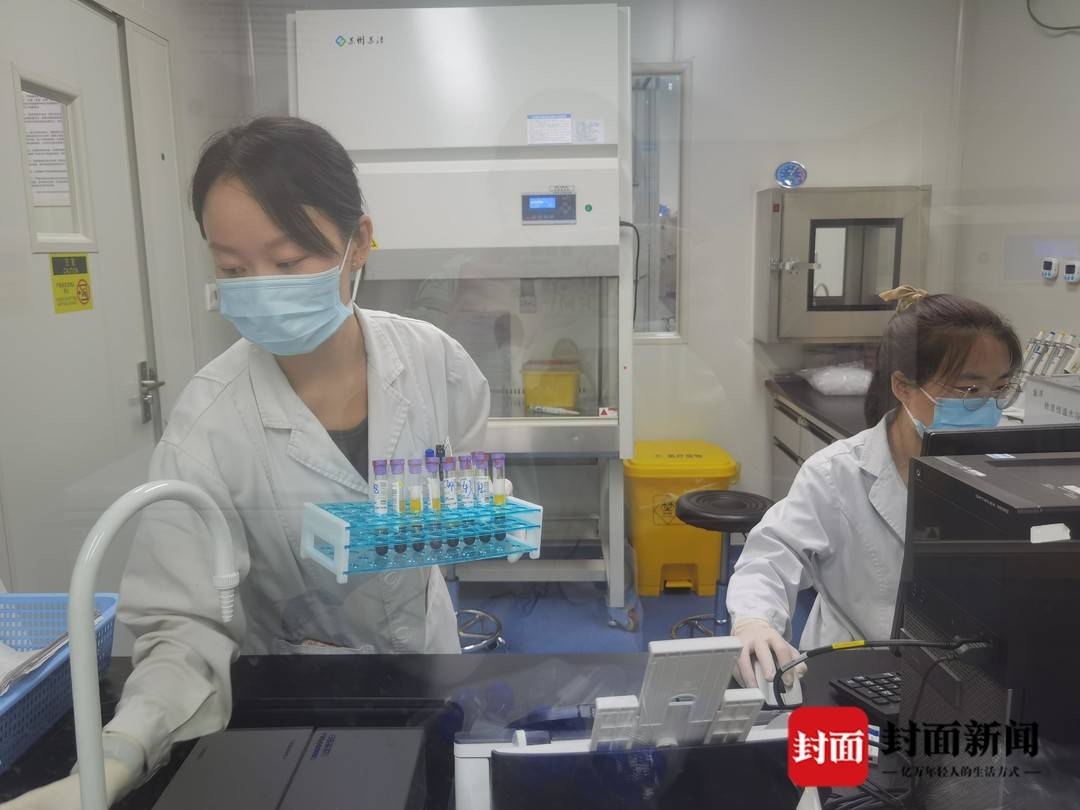Neijiang Maternal and Child Health Hospital took the lead in carrying out the prenatal non -invasive DNA detection technology in the city
Author:Cover news Time:2022.08.11

Cover reporter Huang Xiaoqing
On August 8th, the prenatal diagnostic and child health hospital in Nengxing District, Dongxing District, Neijiang City, in the genetic laboratory of prenatal diagnostic diagnostics, reagent preparation room, specimen preparation room, amplification room, product analysis room, sequencing room, clean, tidy, clean, clean, clean, clean, clean, clean, clean, clean, clean, clean, clean, clean, clean, clean, clean, clean, clean, clean, clean, clean, clean, clean, clean, clean, clean, clean, clean, clean, clean, clean, clean, clean, clean, clean, clean, clean, clean, clean, clean, clean, clean, clean, clean, clean, clean, clean, clean, clean, clean, clean, clean, clean, clean, clean, clean, clean, clean, and clean, clean, tidy, and clean. The equipment is complete. Three inspectors are dealing with the specimen. The person in charge of the laboratory stands in the sequencing room to observe the operation of the equipment.
The operation of this sequencing device also marks the official put of the hospital's non -invasive DNA detection. Since then, Neijiang Maternal and Child Health Hospital has become the first hospital in the city to independently conduct non -invasive DNA testing of prenatal prenatal. It has truly achieved the overall samples of the hospital, and the full process coverage of samples, samples, and reporting.

Non -invasive DNA prenatal testing is a new type of testing technology for fetal chromosomal abnormal diseases. This method uses a new generation of high -throughput sequencing technology combined with biological information analysis methods to detect and analyze the fetal departure DNA in the peripheral blood of pregnant women. New type of testing technology with high accuracy, high accuracy, and fast.
The target disease of non -invasive DNA prenatal testing is three common fetal chromosomes non -rectifier abnormalities, namely 21 trisomy syndrome, 18 trisomy syndrome, and 13 trisomy syndrome. Taking the detection of Tang's syndrome as an example, the study found that for pregnant women's peripheral blood in the peripheral of the peripheral blood of pregnant women, the DNA in the peripheral blood of the pregnant woman, because the Tang syndrome fetuses are one more 21 chromosomes than the normal fetus, which causes the pregnant woman with the perturbic syndrome to be in the peripheral blood of the peripheral blood 21 in the peripheral blood. The chromatography content is slightly higher than that of normal pregnant women. Therefore, prenatal testing through non -invasive DNA can be effectively detected.

What are the advantages of non -invasive DNA prenatal detection? First of all, it is a non -invasive detection method. It only needs to collect 10 ml mothers peripheral blood, which will not lead to the risk of infection and miscarriage in pregnant women. Sequencing reflects changes in chromosomal copies and has high accuracy, but there is also a possibility of false positive or false negatives.
Of course, this method of testing is not applicable to everyone. Pregnant women are divided into applicable people, cautious people, and unsuitable people. Pregnant mothers can understand whether they meet the test conditions under the guidance of a doctor. It should be reminded that pregnant women who have not undergone non -invasive DNA prenatal testing during pregnancy screening during pregnancy should be evaluated in a timely manner.
- END -
Which of the family education vs school education, which one has a greater impact on children?Many parents don't know

Even if it is daily life, it will be full of learning advantages.Many parents will...
Tell you a ghost story: chainsaw invention is to facilitate the seeking pelvic bone to have children

Source: Science Popularization ChinaAlthough the history of humans has been using ...